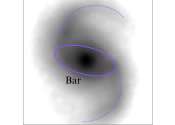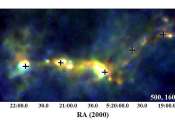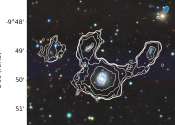Star bars show universe's early galaxies evolved much faster than previously thought
The universe's early galaxies were less chaotic and developed much faster than previously thought, according to new research looking back more than ten billion years in time. An international team of astronomers led by Durham ...









